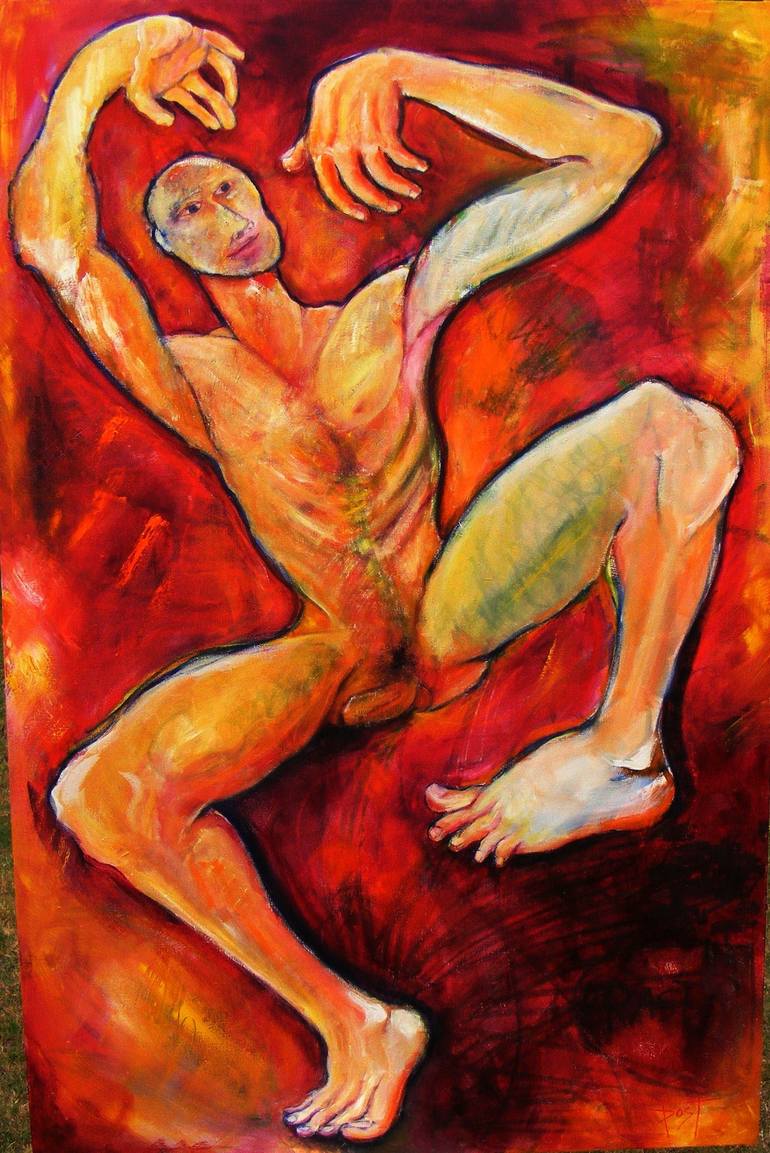Adapted from Anacreon # 53
Gray hair rings my head.
When I see young men dancing,
I am young again
and waltz as well as any.
Bring me scotch, no ice,
to stupefy my heart.
I’m old, about to die,
but I’ve got reels to dance
and polkas to step
before I let you bury me!


Dancing Man -- Robert Post
Anacreon was a 6th-century BCE Greek lyric poet from modern Siğacık, Turkey, notable for his drinking songs and hymns. He wrote in the ancient Ionic dialect, and, like all early lyric poetry, his work was composed to be sung or recited to the accompaniment of music, usually the lyre. Most of his verses were in the form of monody, which means that they were to be performed by a single voice rather than by a chorus. He was born in Teos, 1 of the 12 cities that formed the Ionian League to forestall Persian invasion. After Teos was conquered by the Persians in 546 BCE Anacreon fled to the newly founded city of Abdera, on the coast of Thrace. His 1st patron was Polycrates of Samos, but after his assassination by the Persians, Hipparchus sent a special embassy and a galley to take the poet to Athens. After that patron was assassinated in 514 BCE, he accompanied his fellow poet Simonides to the court of Echecrates in Thessaly and may have choked to death on a grape-stone back in Teos. The collection of his poetry that became the standard edition was probably prepared in Alexandria by Aristarchus in the 2nd century BCE and divided into 9 or 10 books on the basis of metrical criteria, but of the 5 books that Athenaios Naukratites listed as being extant in the 2nd century (according to the 10th century Byzantine encyclopedia known as the "Suda") listed as extant, only fragments, collected from the citations of later writers, still exist. However, the "Anacreontea," a collection of about 60 poems by numerous, anonymous imitators but once believed to be by Anacreon himself, was preserved in a 10th century manuscript which was published in 1554 with a Latin translation by Henri II Estienne ("Stephanus"). They were probably composed over several centuries, from the 4th century BCE until the 4th century. Thomas Stanley translated the "Anacreontea" into English verse in the 17th century, and Abraham Cowley coined "Anacreontics" in 1656 to denote a meter consisting of 7 or 8 syllables with 3 or 4 main stresses, and Robert Herrick, William Oldys, and William Shenstone wrote original Anacreontics. In 1800 Thomas Moore published the most highly regarded English translation:
ReplyDeleteWhen I behold the festive train
Of dancing youth I'm young again!
Memory wakes her magic trance.
And wings me lightly through the dance.
Come, Cybeba, smiling maid!
Cull the flower and twine the braid;
Bid the blush of summer's rose
Burn upon my brow of snows;
Bid the blush of Summer's rose
Burn upon my brow of snows;
And let me, while the wild and young
Trip the mazy dance along,
Fling my heap of years away,
And be as wild, as young as they.